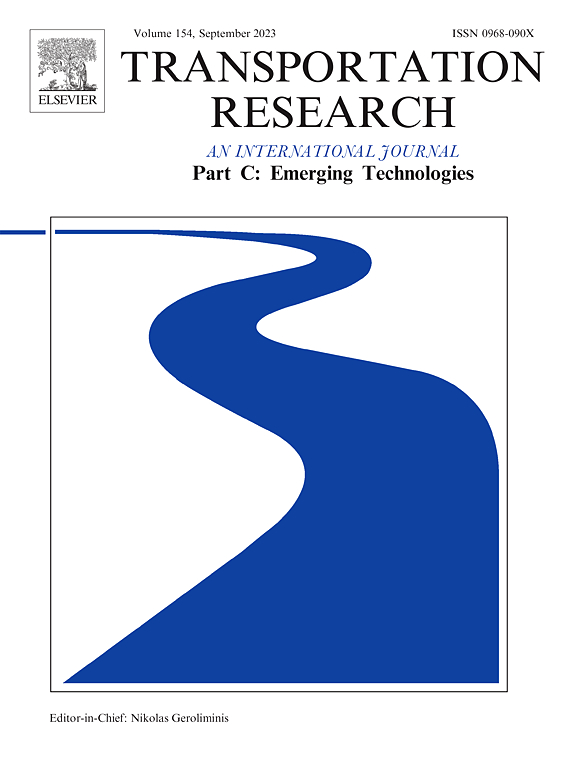Estimating MFD model parameters from sparse license plate recognition data: The role of path reconstruction and regionalization
IF 7.6
1区 工程技术
Q1 TRANSPORTATION SCIENCE & TECHNOLOGY
Transportation Research Part C-Emerging Technologies
Pub Date : 2025-02-01
DOI:10.1016/j.trc.2024.104982
引用次数: 0
Abstract
The Macroscopic Fundamental Diagram (MFD) provides a convenient and computationally efficient tool for urban traffic monitoring and control. However, the accurate estimation of the model parameters is a prerequisite for the MFD models to be practically applicable. The significant deficiencies in commonly used data sources underscore the importance of utilizing new data sources to estimate the MFD model parameters. This study proposes a comprehensive framework to estimate critical parameters for multi-region MFD models based solely on License Plate Recognition (LPR) data. An efficient link-based path reconstruction algorithm is introduced to transform observed vehicle trajectories into continuous paths. Considering the inherent incompleteness of observed trajectories, this study presents a novel regionalization framework to match initial or final observation points to specific subregional networks. An adaptive large neighborhood search (ALNS) algorithm is proposed to improve the flow correlation within these subregions. Subsequently, an OD inference model using importance sampling is introduced to estimate the true OD of trips within the identified subregions. The resulting complete vehicle trips can be used to estimate trip length distributions and path flow coefficients. In addition, a method for estimating the MFD shape, tailored for application to sparse LPR data and based on reconstructed vehicle trajectories, is proposed. The effectiveness of these methods is validated through both simulation experiments and empirical studies. This framework is expected to facilitate the practical application of MFD models to realistic road networks.
求助全文
约1分钟内获得全文
求助全文
来源期刊
CiteScore
15.80
自引率
12.00%
发文量
332
审稿时长
64 days
期刊介绍:
Transportation Research: Part C (TR_C) is dedicated to showcasing high-quality, scholarly research that delves into the development, applications, and implications of transportation systems and emerging technologies. Our focus lies not solely on individual technologies, but rather on their broader implications for the planning, design, operation, control, maintenance, and rehabilitation of transportation systems, services, and components. In essence, the intellectual core of the journal revolves around the transportation aspect rather than the technology itself. We actively encourage the integration of quantitative methods from diverse fields such as operations research, control systems, complex networks, computer science, and artificial intelligence. Join us in exploring the intersection of transportation systems and emerging technologies to drive innovation and progress in the field.

 求助内容:
求助内容: 应助结果提醒方式:
应助结果提醒方式:


